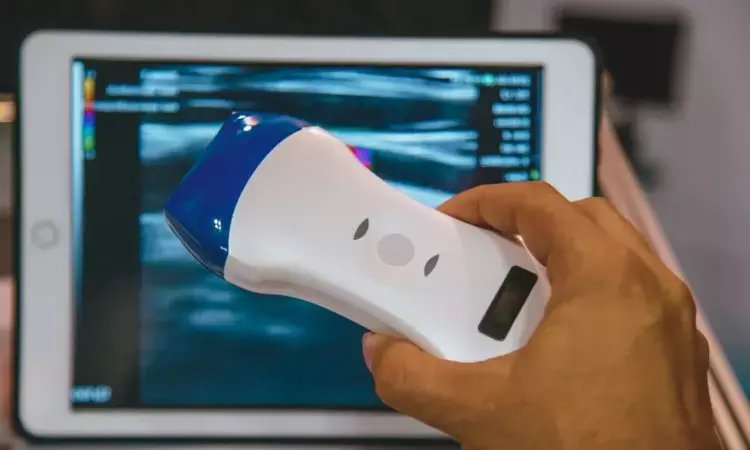- Home
- Medical news & Guidelines
- Anesthesiology
- Cardiology and CTVS
- Critical Care
- Dentistry
- Dermatology
- Diabetes and Endocrinology
- ENT
- Gastroenterology
- Medicine
- Nephrology
- Neurology
- Obstretics-Gynaecology
- Oncology
- Ophthalmology
- Orthopaedics
- Pediatrics-Neonatology
- Psychiatry
- Pulmonology
- Radiology
- Surgery
- Urology
- Laboratory Medicine
- Diet
- Nursing
- Paramedical
- Physiotherapy
- Health news
- Fact Check
- Bone Health Fact Check
- Brain Health Fact Check
- Cancer Related Fact Check
- Child Care Fact Check
- Dental and oral health fact check
- Diabetes and metabolic health fact check
- Diet and Nutrition Fact Check
- Eye and ENT Care Fact Check
- Fitness fact check
- Gut health fact check
- Heart health fact check
- Kidney health fact check
- Medical education fact check
- Men's health fact check
- Respiratory fact check
- Skin and hair care fact check
- Vaccine and Immunization fact check
- Women's health fact check
- AYUSH
- State News
- Andaman and Nicobar Islands
- Andhra Pradesh
- Arunachal Pradesh
- Assam
- Bihar
- Chandigarh
- Chattisgarh
- Dadra and Nagar Haveli
- Daman and Diu
- Delhi
- Goa
- Gujarat
- Haryana
- Himachal Pradesh
- Jammu & Kashmir
- Jharkhand
- Karnataka
- Kerala
- Ladakh
- Lakshadweep
- Madhya Pradesh
- Maharashtra
- Manipur
- Meghalaya
- Mizoram
- Nagaland
- Odisha
- Puducherry
- Punjab
- Rajasthan
- Sikkim
- Tamil Nadu
- Telangana
- Tripura
- Uttar Pradesh
- Uttrakhand
- West Bengal
- Medical Education
- Industry
New Review Calls for 3-Lead ECG Integration in Portable Cardiac Ultrasound Devices

Arunachal Health Dept Pushes for Strict Ultrasound Registration
UK: Portable handheld cardiac ultrasound devices have rapidly become essential tools in emergency rooms, outpatient clinics, and even remote healthcare settings. Their ability to deliver real-time cardiac imaging at the patient’s bedside has transformed point-of-care diagnosis and treatment. Yet a key feature remains absent in most models: a built-in 3-lead electrocardiograph (ECG).
A recent mini-narrative review in Apollo Medicine highlights why adding this function is critical for improving diagnostic precision and patient outcomes.
The review explored evidence from multiple studies examining the value of pairing a 3-lead ECG with handheld echocardiography. Transthoracic echocardiography provides detailed structural and functional information about the heart, while an ECG records the heart’s electrical activity and rhythm. When used together, they allow clinicians to time image acquisition precisely within the cardiac cycle—something that standalone handheld scanners cannot currently achieve.
Key results highlighted in the review include:
The review also emphasised that synchronising cardiac imaging with electrical activity—capturing frames at end-diastole or end-systole—improves measurement of chamber dimensions, ventricular function, and haemodynamics. Such precision can be lifesaving during emergencies like cardiac tamponade or acute heart failure, where seconds matter.
Author Chidiebere Emmanuel Okechukwu, from the Cardiology Department of University Hospitals Plymouth NHS Trust, reinforces this message: “Integrating a 3-lead ECG with portable handheld echocardiographs enables real-time synchronisation of electrical and imaging data, enhancing diagnostic accuracy in point-of-care cardiac evaluations by precisely timing measurements—like QRS for end-diastole and T-wave for end-systole—while detecting arrhythmias and guiding assessments of ventricular function and diastolic dynamics.”
Beyond emergency departments, the potential impact is wide-ranging. Family physicians and general practitioners could employ these dual-function devices for routine check-ups, early detection of heart disease, and ongoing management of chronic conditions. The combination of structural and electrical insights would give clinicians a more complete picture of cardiac health without requiring multiple separate tests.
The review concludes with a call to action for medical device manufacturers: future handheld echocardiographs should incorporate 3-lead ECGs and leverage artificial intelligence to assist in real-time analysis. Such innovations would not only enhance diagnostic accuracy but also democratise advanced cardiac care, making it accessible in rural clinics, disaster zones, and low-resource settings.
"As cardiovascular diseases continue to rise globally, the integration of ECG into handheld cardiac ultrasound devices is more than a technological upgrade—it is an urgent step toward faster, more accurate, and more equitable heart care," Dr. Emmanuel Okechukwu wrote.
About the study author
Dr Chidiebere Emmanuel Okechukwu, PhD, FRSPH, is a multidisciplinary expert in clinical echocardiography, cardiovascular physiology, cardiac rehabilitation, public health, and cancer recovery. His training in transthoracic echocardiography enables precise cardiac diagnostics, while his foundation in cardiac physiology informs his approach to heart health. He has led research on exercise-based cardiac rehabilitation, particularly in patients with chronic heart conditions. In Canada, he contributed to cancer rehabilitation through the ACE and EXCEL programs, promoting physical and mental recovery in survivors. Presently works at the cardiology department, University Hospitals Plymouth NHS Trust.
Reference:
Okechukwu CE. Why Portable Handheld Cardiac Ultrasound Devices Ought to Incorporate 3-lead Electrocardiographs: A Mini-narrative Review. Apollo Medicine. 2024;22(5):427-431. doi:10.1177/09760016241301135
Dr Kamal Kant Kohli-MBBS, DTCD- a chest specialist with more than 30 years of practice and a flair for writing clinical articles, Dr Kamal Kant Kohli joined Medical Dialogues as a Chief Editor of Medical News. Besides writing articles, as an editor, he proofreads and verifies all the medical content published on Medical Dialogues including those coming from journals, studies,medical conferences,guidelines etc. Email: drkohli@medicaldialogues.in. Contact no. 011-43720751


